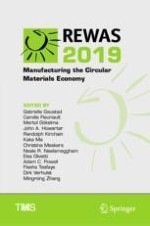2019 | OriginalPaper | Buchkapitel
Isolation of Cyanide-Degrading Bacteria from Cassava-Processing Effluent
verfasst von : Amzy Tania Vallenas-Arévalo, Carlos Gonzalo Alvarez Rosario, Marcela dos Passos Galluzi Baltazar, Denise Crocce Romano Espinosa, Jorge Alberto Soares Tenório
Erschienen in: REWAS 2019
Aktivieren Sie unsere intelligente Suche, um passende Fachinhalte oder Patente zu finden.
Wählen Sie Textabschnitte aus um mit Künstlicher Intelligenz passenden Patente zu finden. powered by
Markieren Sie Textabschnitte, um KI-gestützt weitere passende Inhalte zu finden. powered by
